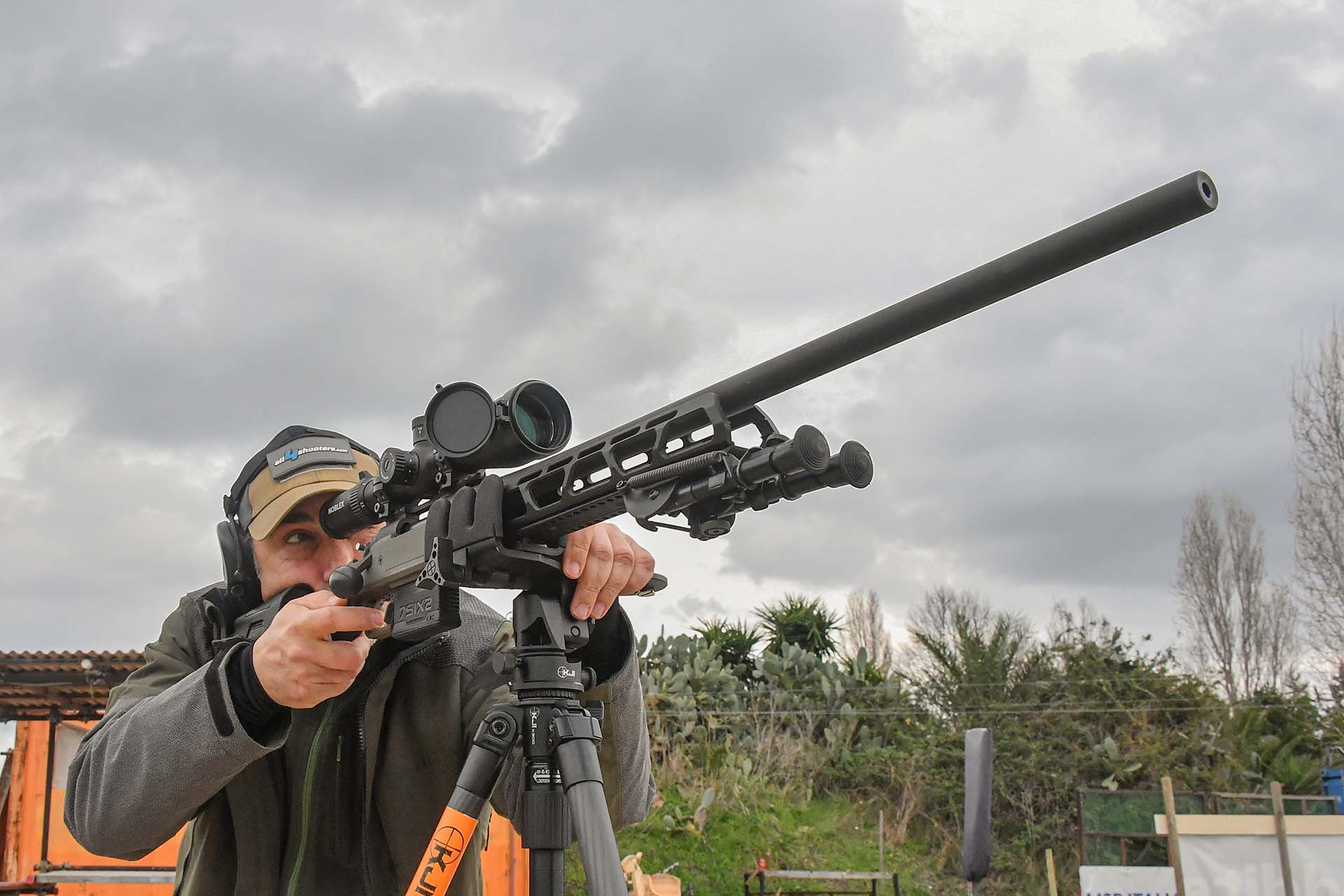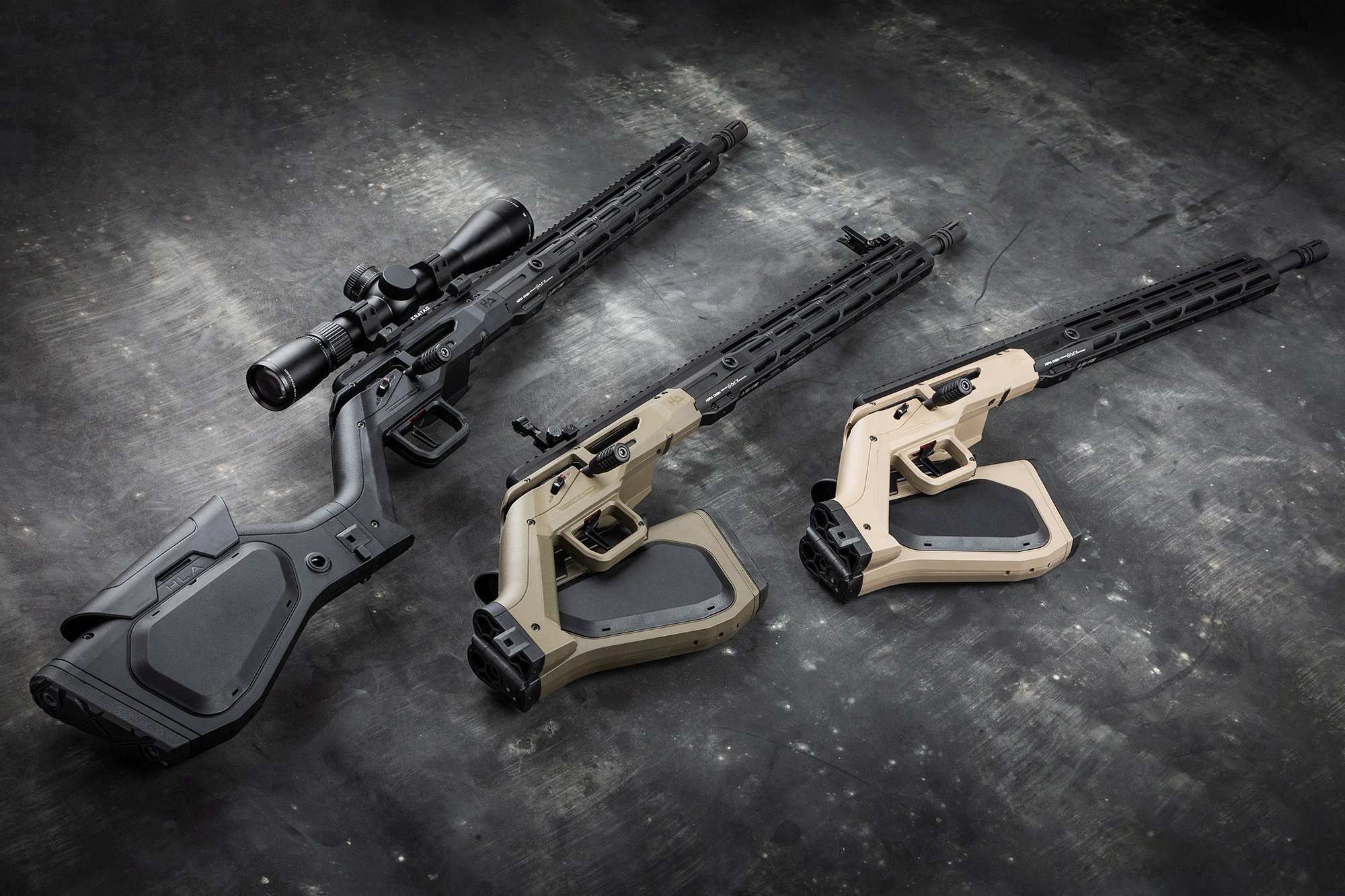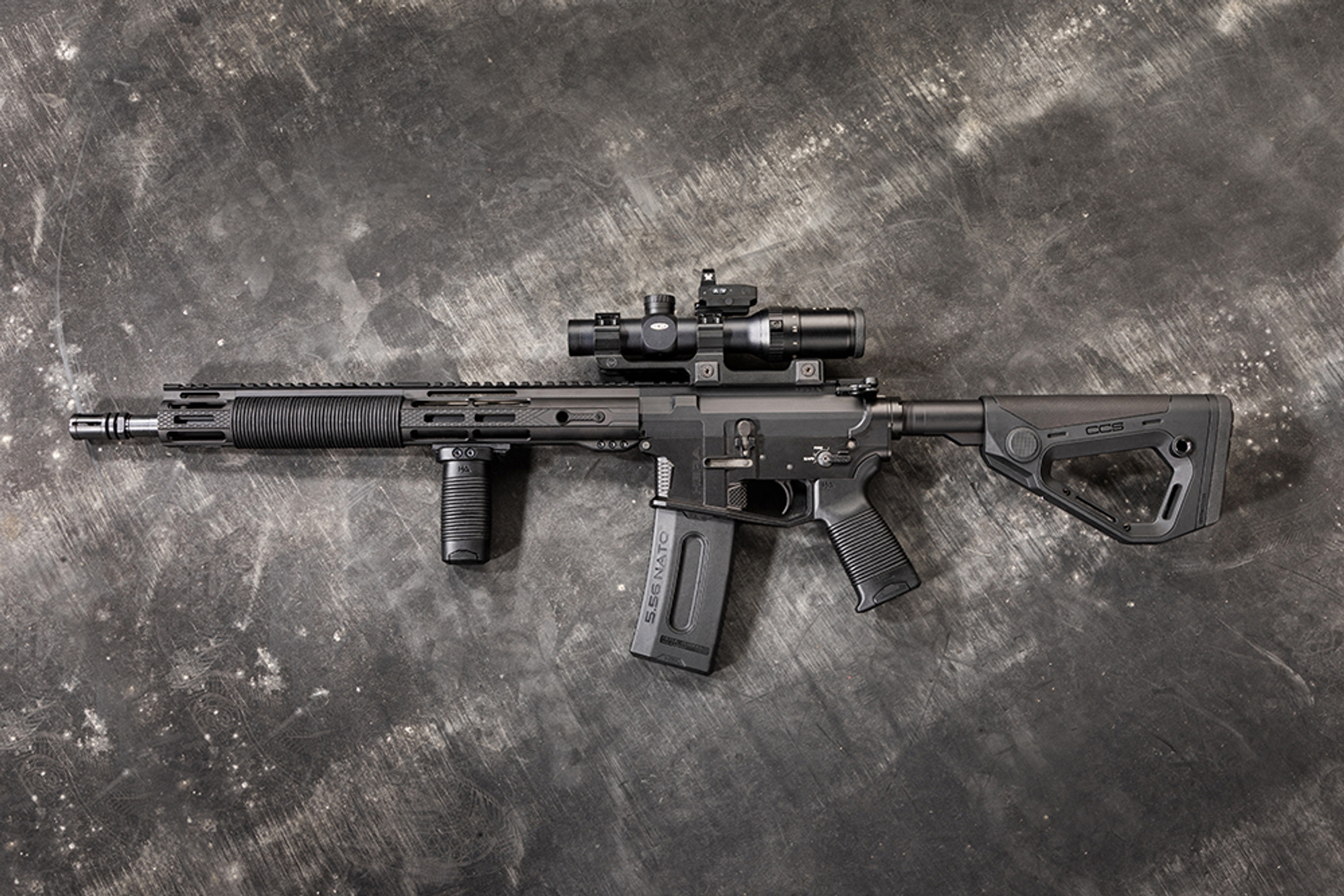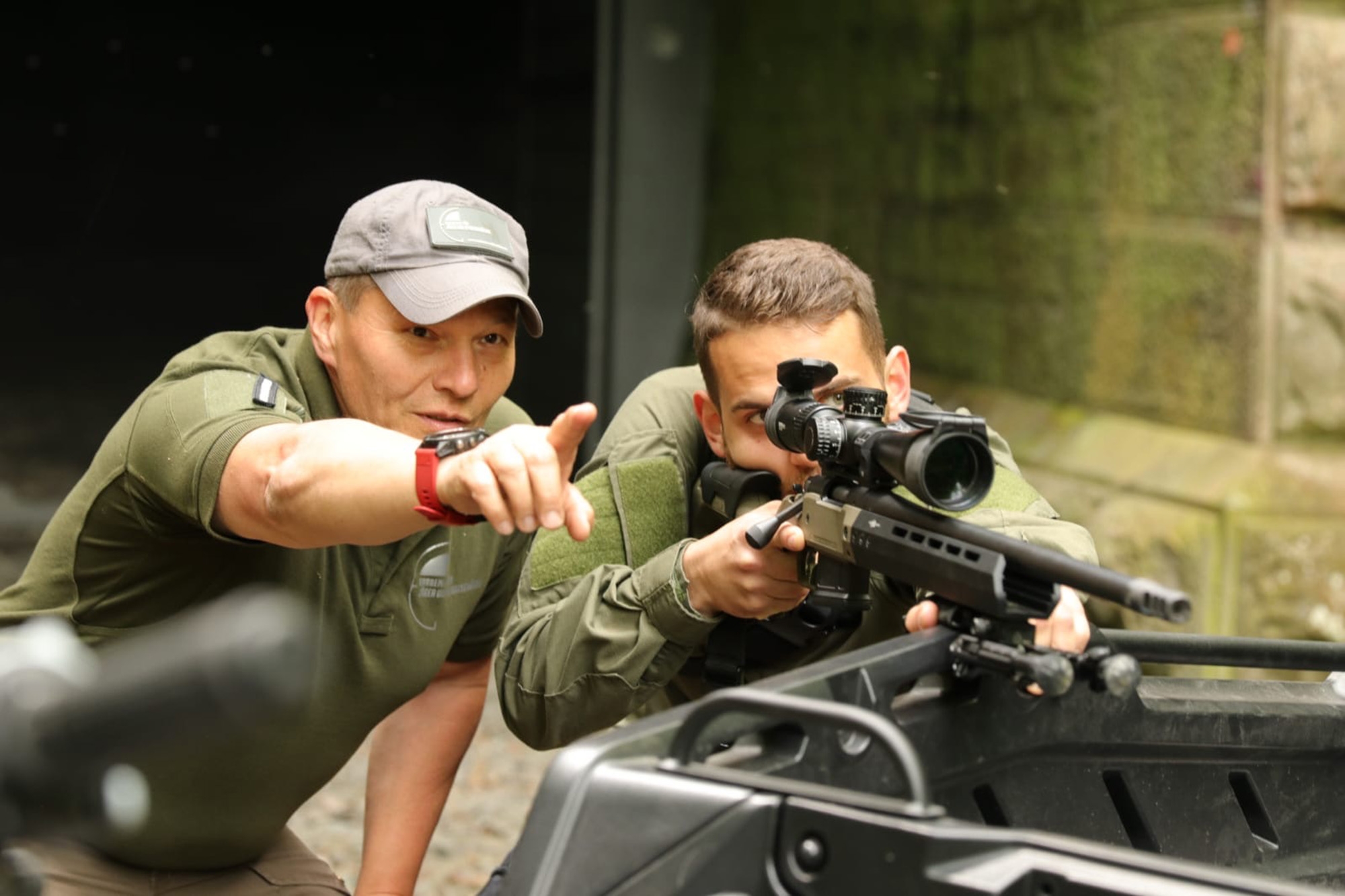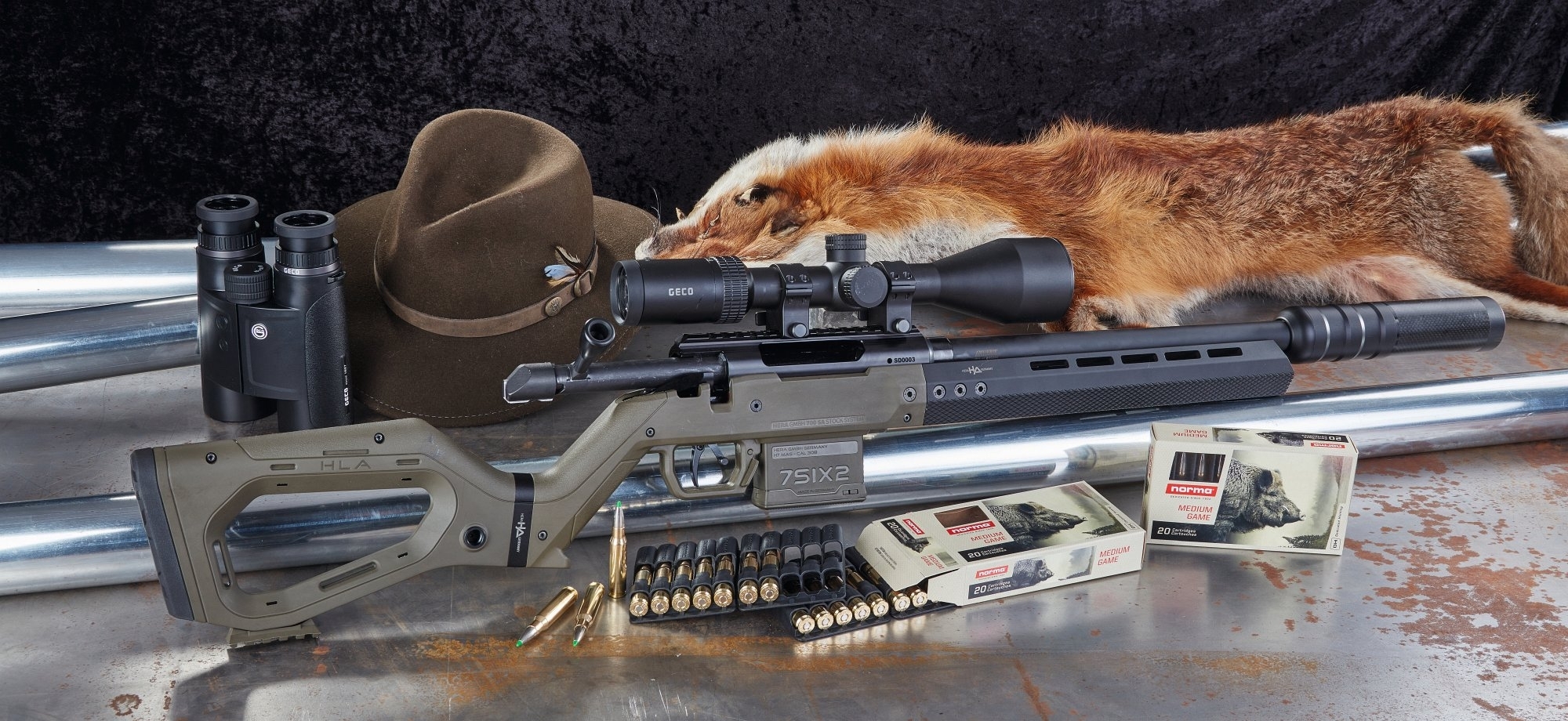We already had the opportunity to observe the .223 in use on the hunt in 2022. You can find the article under this link to our visit to the Lüdersburg hunting school. Incidentally, the hunting ground there is a typical roe deer hunting ground where the use of the .223 makes a lot of sense. The game-preserving effect of the .223 cartridge is one of the main reasons to go hunting with it. Another is the significantly lower price compared to the .308 or .30-06, but as one of the viewers commented on YouTube: " Hi. I have the same problem with such a small caliber as many others. Like yesterday morning when I was out deer hunting. What came up? 2 male wild boar. I managed to kill one of them, 60kg. I also had fallow deer in mind. So this cartridge is only for hunting grounds where there are only roe deer." - wild boar cannot be shot with this cartridge.
And there you can already see the dilemma inherent in the .223. The caliber is too small for hoofed game other than roe deer and does not have enough energy. If wind and rain are added to this and the shooting distance is to exceed the classic 100 meters, you have to know exactly what your own set-up of gun, optics and ammunition is capable of. We tested it at 100 and 300 meters!
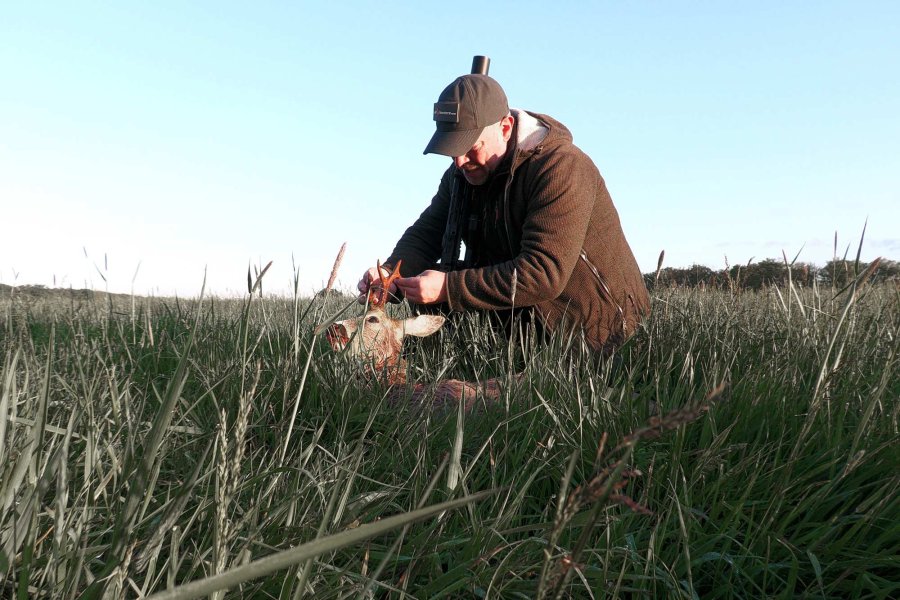
Our test equipment: Hera H6, riflescope from DDoptics and ammunition from Hornady
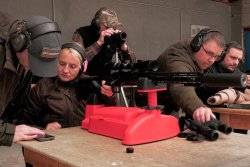
During the Düben Hunting Days 2024, an event that takes place in Germany, around 10 people had the opportunity to take a close look at the set-up consisting of the Hera H6, the Nighteagle V6 2.5-16x42 from DDoptics and 3 different Hornady bullets at 100 and 300 meters. Before we get to the details of the equipment, here are a few words about the organisation and the weather on that weekend and the subsequent hunt: the Düben Hunting Days are organised by Gert Mürmann and the Saxony-Anhalt State Forestry Department. The hunting ground is located in the Düben Heath. The weather on that day was characterised by strong winds (gusts of up to 25 km/h) and rain. These conditions did not make it easy for us to reach the 300-m target, as all three Hornady bullets used suffered considerably from the influence of the wind. In any case, it was interesting for us to see what the .223 is capable of in the 100-to 300-m range.
Due to the poor weather conditions, we repeated our visit to the shooting range of the Kemberg gun club, the Oppin range, three days later. However, with wind speeds of around 3 metres per second, we had to work with the wind drift of the bullets on that day too. The evaluation of our results can be found at the end of the article.
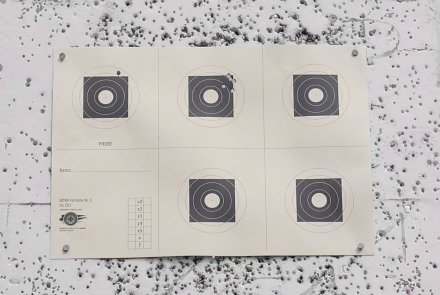
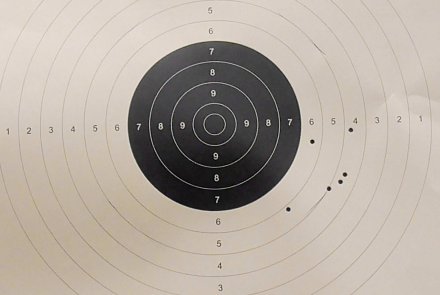
The Hera H6, a modern repeater that is deliberately different
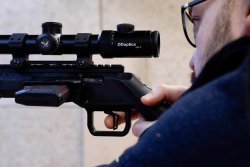
We have already reported on the Hera H6 several times. Now this test in Saxony-Anhalt was the first in our long-term test with the Hera H6. It was clear to us from the outset that the overall concept of the Hera H6 does not necessarily correspond to what you would expect from a typical hunting bolt-action rifle. And the initial feedback on YouTube also suggested that the look of the gun would polarise traditional hunters. Opinions are divided as to what does and does not pass as a hunting rifle in the traditional sense. However, we were interested in the interplay between the gun, optics and ammunition and, in the end, the only important question for the user from our point of view is the following: does this particular set-up work reliably and can it be used for hunting? And in our opinion, it works very well. Of course, we also asked around in the hunting community and it is always interesting to hear that young hunters in particular are enthusiastic about the unusual design with the side mounted magazine. Nevertheless, this set-up is limited, mainly due to the small caliber. We will come to this in detail later and explain the advantages and disadvantages. Our review continues with the Nighteagle V6 2.5-16x42 from DDoptics.
Nighteagle V6 2.5-16x42 from DDoptics: can you hit the 10-ring on the target at 300 metres?
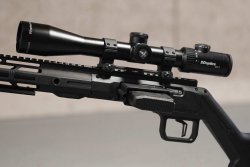
Let's start with the basics: slim design, acceptable price and a magnification range of up to 16x. These were the reasons why we called DDoptics in January 2024 and asked them for a suitable optic for the Hera H6. The reply included a 42x scope that didn't cost €1,000. But would this scope, which matched so well visually, also work at 300 meters? The question can be answered with some reservations:
- Yes, you can get into the 10 ring with our set-up in .223 at 300 meters.
- No, there is no guarantee, because you have to reckon with mirage in combination with the Hera H6, especially with long shot strings. Your eyesight will be more strained than if you had used a DDMP 5-30x56, even though the look of this would not match the Hera H6 so well.
- The shooter's skill is of course crucial, but it is possible.
A lot of "ifs and buts", right? In terms of hunting, however, we were not embarrassed to shoot further than 100 meters. And since the majority of roe deer are shot at distances of up to 150 meters, our set-up of Hera H6 and Nighteagle V6 2.5-16x42 from DDoptics is ideally suited for this hunting discipline. Another advantage is that the riflescope has a short construction, which means it can also be used with attachments. Only then, in our view, better with a caliber suitable for big game. This brings us directly to the ammunition and the .223 cartridge.
Hornady hunting ammunition in .223 Remington: Match BTHP 4.4g/68gr, V-Max 3.6g/55gr and ECX 3.2g/50gr
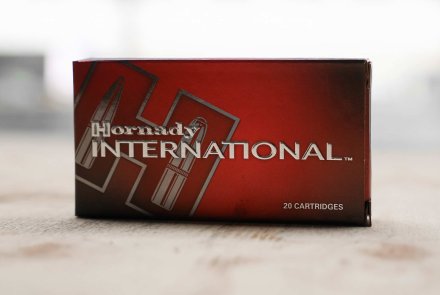
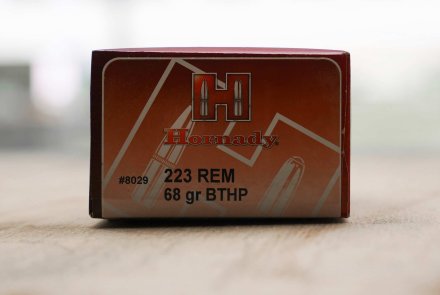
We would like to take this opportunity to say a big thank you to Jens Tigges, who provided us with the above-mentioned Hornady bullets in .223 calibre. Based on our shooting performance, we opted for the 55-grain V-Max bullet. In terms of weight, the 68-grain bullet would certainly have been the better choice, but as this cartridge is mainly used as target ammunition and is more likely to be used for hunting predators, we opted for the golden mean: the 55-grain V-Max bullet from Hornady. The accuracy of the bullets in the three variants was good to very good in groups of five at 100 meters. At 300 meters, however, we experienced wind drift of up to approx. 30 centimeters, especially with the very light 50-grain bullet. We then received the following reply from Jens Tigges when we enquired about our observations:
Hello all4hunters.com,
Thank you for the feedback from your test. Here are our suggested solutions: please think about an alternative in terms of bullet weight. Heavy bullets have up to 50% less wind drift and still provide enough accuracy. Your choice compared to the Hornady alternative:
Your choice: 55 gr/3.6 g V-Max (.255 BC G1) 988 m/s from 61-cm measuring barrel = approx. -70 m/s from 46-cm Hera = 918 m/s = at 300 m: 582 m/s and 603 joules on target and 21.5 cm wind drift at 10 km/h wind from 90 degrees (Full Value)
Alternative for hunting: The Hornady .223 Rem 60-gr SP InterLock ammunition is ideal for hunters and sport shooters looking for a reliable and accurate cartridge. This high-quality ammunition is ideal for .223 Remington rifles and impresses with its great performance at short to medium ranges. Note on the Hera H6: the Hera H6 is known to have a 1:9 twist. For heavier bullets, short twist rates of 1:8 or 1:7 are preferable. As always, it certainly helps to visit the shooting range beforehand and take a close look at your set-up in terms of energy and wind drift in .223 caliber.
This alternative shows that despite the lower velocity, the heavy bullet not only has less wind drift, but also delivers more energy and still enough velocity for a safe bullet function on target.
The free Hornady Ballistics app always delivers very good results.
Good hunting, Jens
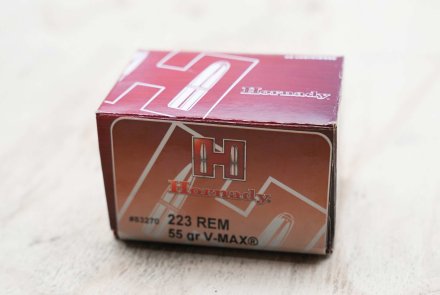
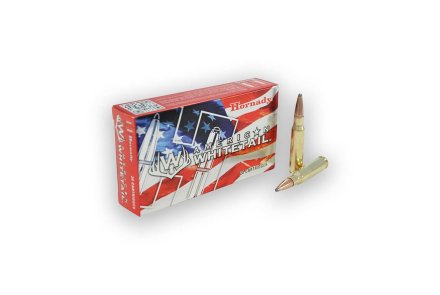
Conclusion on the Hera H6, DDoptics V6 2.5-16x42 and the .223 from Hornady
Based on our hunting experience, we can say that the .223 Remington is a very suitable cartridge for hunting predators and roe deer. As always when we share an experience with the readership of all4hunters.com, we would like to point out that our experiences can only reflect part of the overall picture in relation to the set-up presented. Taking into account environmental factors such as rain and wind, the hunting set-up and the user's shooting skills, it must be clearly stated that the .223 Remington requires practice on the shooting range before a hunt, which gives the user a realistic picture of the performance of the hunting set-up.
Let's come to our limitation at the end of the article. We asked whether users would like to see a different twist rate in the Hera H6. So far we have not received an answer to this technical question. The subject of barrel length and twist rate in relation to the .223 calibre is an important one from a ballistic perspective. If you follow our experience and use heavy bullets in .223 when hunting roe deer, then the twist will logically come into play at some point. Heavy bullets, short twist rate!
Many thanks for providing the test samples to:




